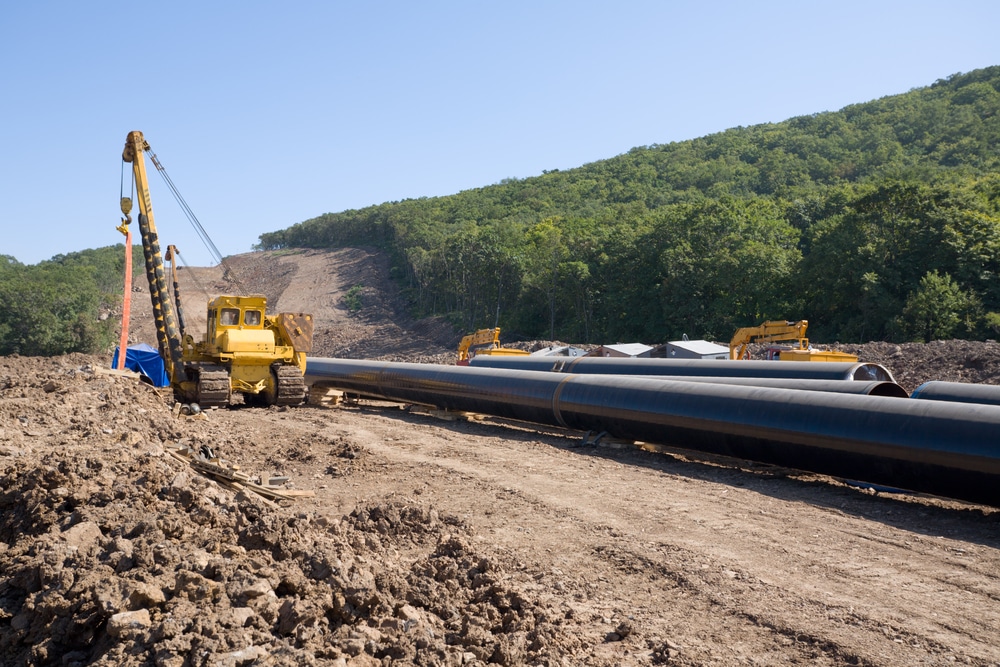What is a daily log in construction?
A construction daily log or daily report is a necessary tool that compiles information from each day that there is work done at every job site. Basically, it is used to record the everyday progress of construction projects.
Putting together a construction daily log may appear like a chaotic and endless project. The good news is that the advent of digital solutions has simplified this demanding process as it has automated some of its most time-consuming aspects.
Despite its paramount importance, many people in construction still seem sometimes to underestimate its necessity. Nevertheless, those who have needed to go back and refer to them weeks after have understood why daily logs are a fundamental component of the construction process.
Construction daily logs can also be valuable when companies end up in court or arbitration, as the documentation can be helpful in scenarios of he said, she said. In other words, daily logs may function as an objective source of truth concerning anything that has taken place on site.
For that reason, it is crucial that no information is lost. All facts should be documented within these daily reports because anything being left out may result in harmful conflicts or costly misunderstandings.
There is no steadfast rule as to how the logs need to be filled out, as both digital and handwritten notes are acceptable. However, daily logs that are created by pen and paper have started to be seen as problematic for a number of reasons such as the fact that they can’t be updated or that their legibility is vastly dependent on the handwriting of the person that creates them.
Construction daily logs are, typically, filled out by the foreman of the job, the superintendent, or even the project managers. After all, the more information collected, the better the documentation will be.
The input from each day should be collected regularly, at least once a week. In the pre-digital days, daily reports used to be placed in a three-ring binder in the office.
As digital technologies are taking over, people on site have now the option to store these precious pieces of information online with the help of construction daily log software. In that way, all project agents can access it effortlessly and share it with other team members.
In a nutshell, here are some of the main benefits of turning your construction daily logs process digital:
- You are able to generate personalised and very professional-looking logs that you can share with the different stakeholders of the project (eg. construction managers, clients, etc).
- You can easily access and update the report on-site just by using your tablet or mobile device.
- Submit, store and retrieve crucial project information quickly.
- Adjust your report based on the requirements and needs of each project.
- Better collaboration and coordination between the different sides as all the information is easily accessible on the cloud.
- Automatically generated weather reports and increased data precision in general.
- More in-depth and intuitive construction daily logs.
Free eBook: Quick guide to Lean practices for construction professionals
What’s included in a construction log
Depending on the type of project, a construction daily log may look different. In any case, though, there are certain elements that should always be included. Here are some of the most notable sections of a construction log and the information that should be included in each one:
Site conditions
The site conditions section normally includes what the weather was like on that day. This is important for documentation because if something like grading needs to be done but it has been pouring rain for three days straight and the field is very muddy, it will show that everyone was ready but unable to do the job during the scheduled time frame.
Personnel
This area is where the number of subcontractors, labourers, architects, engineers, and other personnel that was at the job site can be written down. Names do not always need to be listed but can be helpful in certain situations.
Activities by the prime contractor
This is a general description of what the main contractor did during the day. If written on paper, this is normally written in brief unabbreviated short sentences due to space constraints.
Activities by subcontractors
Similarly to what was described above, this category includes all the activities of subcontractors in the course of the day on the field. On top of that, a list of the problems that they might have encountered or what needs to be done next can be included. With the use of construction daily log software, subcontractors can submit and receive updates from other project agents in real-time.
Remarks
This section will include any visitors, accidents, changed or unsafe conditions, issues for scheduling or delays, major deliveries, sequencing, and unsuccessful attempts to contact people. This is also where any extras can be documented, as not every extra has a written contract and documentation needs to be found somewhere.
Tests and inspections
Any tests and inspections that have been done during the day should be documented so that everyone knows when each one was completed. This can be an integral part of the snagging process, as well.
Memos of meetings and discussions
Meetings and discussions are a major part of the daily routine on a construction site and what is discussed in each one needs to be documented.
Delays and problems created by the owner or representative
Owners and representatives can cause problems with jobs because they are continuously changing their mind with what they want or need. Any changes, sequencing changes, necessary ambiguous plans, and anything else must be documented, so that it can be proven at the end if the owner or representative complains when the work is not completed on time as scheduled.
Material and equipment delivered
Documenting when materials and equipment have been delivered will allow everyone to keep track of what is on hand. This is also crucial if the equipment is only supposed to be on the job site for a few days, as it allows people to know when it needs to be returned.
Drawings
Little sketches or drawings may be necessary to document changes in plans. These shifts on the agreed plan should always be documented on the construction daily log so that everything progresses as expected.
Photos
A photograph is worth a thousand words, which means that sometimes photos are better off telling the story than writing everything down.
Material and equipment that is being ordered
Just like documenting when materials and equipment arrive, people both on the field and in the boardroom need to know when those two are being ordered. This will let everyone know that these items will be arriving sooner than later.
Maintenance and repair logs
Keeping track of when maintenance on equipment has been completed and when the equipment is being repaired can help keep companies on track at the job sites.
As everyone can see, the construction log has numerous sections that need to be filled out. However, by filling them out, everyone will remember the events of every specific day, which is much better than trying to refer back to a person’s memory a week, a month, or even a year later.
More to read: Construction site diary: Everything you need to know
3 reasons everyone needs to keep construction daily logs
Construction sites are very busy places and the person in charge can’t always be physically supervising everything. Plus, the project managers, superintendents, and other people in charge are trying to keep track of hundreds, if not thousands, of little details every day. And, all that information can get lost or forgotten very easily.
A well-updated construction daily log can help a lot in that direction. Especially after the emergence of digital solutions where the documentation of all site activity has become faster and more precise, daily reports can function as the objective source which can keep everybody updated.
This ensures that nothing will be forgotten and that everyone will remember what was completed on a snowy, cold day back in February 2012.
There are many ways in which a construction daily log can be generated. Regardless of how you choose to create, it’s crucial that all information is included in a straightforward and understandable manner. For instance, all abbreviations that are used must be common and well-known, so that there are no misconceptions by the numerous members of the project.
In cases where the daily log is handwritten, something that is no longer recommended, the person who creates the report needs to make sure that all the information are readable and neatly documented.
Handwritten or digital, by now it is evident that everyone involved in a construction project should keep a detailed and up-to-date construction daily log. And here is why:
1. Dispute resolution
According to Plan Academy, just in 2015, the overall cost for the construction industry due to legal disputes was $42.8 million. On top of that, a legal conflict can, on average, last for 14 months. These statistics show in an emphatic way that disputes are one of the main pain points for the industry.
Construction daily logs can contribute to the reduction of project disputes and by extension the increase of field productivity and the improvement of collaboration between the different sides.
Since construction daily reports include information like what was said during staff meetings, who was present on the job site each day, what arrived at the job site, what accidents may have occurred, and what the weather was like, it gives everyone an idea of what took place each and every day. As long as they are filled out properly, these reports can be used for legal matters, as they will offer specific details of everything that happened during the project.
2. Standardisation
Every construction project is different, but that doesn’t mean that a new scenario that is seen now will not show up in the future as well. Once the information about the scenario is documented within the construction daily log, everyone will be able to go back and review that information at any time in the future. This will save workers time, and since time is money, quite a bit of money can be saved as well.
What’s more important is that based on the collected data from prior daily logs, the stakeholders in construction will be able to standardise all different systems and processes for future projects, improve predictability, and increase savings.
Furher reading: How can a digital site diary improve on-site quality control?
3. Changes
There are always employees leaving or being promoted on construction job sites, and the information that is included in the daily logs can be a wealth of information to those who are just coming into the process.
These daily logs are a great place for a person to start as they are learning about the project, determining what has been done already, and finding out what needs to be done in the future to keep everything on track and on schedule.
As everyone can probably imagine, these construction daily logs can take quite a bit of time to fill out and complete each day. After all, there is a lot of information to be jotted down each day and no one ever wants to leave out any of the pertinent details, since one of them might be important in the future.
What you should always include in a construction daily log
If anyone has a really busy day and is finding that they just simply do not have the time to completely fill out the entire form, they will want to include at least three things. The three basic areas that should always be filled out include what was done on the job site that day, the highlights of the day, and any concerns that arose.
Of course, it may also be necessary to include a weather report, especially if the weather prevented anyone from doing their job. Pictures are also a great addition to your log, as they often depict the situation on-site in a much more accurate way.
While the rest of the information within a construction daily log might sometimes be considered fluff and not always needed, most organisations feel that it’s important in case of legal disagreements in the future.
After all, if anything is left out of these daily logs, it may be construed as something is being hidden. That can open up numerous issues that could simply be avoided by taking the time to fill everything out in detail.





